Wintering bees is an important stage in the life of insects, on whom the effectiveness of the medical woman is depends next year. If this period was successful, then the individual is actively developing, many representatives responsible for collecting nectar appear in the population. Bad wintering, on the contrary, fraught with the weakening of families, the death of the module, as well as the appearance of various diseases among the inhabitants of the hive. How to make it so that the aposets survived frost without bee losses and was ready for fruitful work with the arrival of spring heat, read in this article.
Preparation of bees for wintering
Each beeper before the arrival of the cold should take care that its bees survived the period unfavorable for them as comfortably as possible. From proper preparation of insects by winter directly depends on their state of spring. So, at what moments should pay attention first:
- The autumn audit of the hives should provide for checking the number and quality of beekelomacets. Uncomfortable individuals need to be eliminated and replaced by young fruit modules from nucleus. This condition is very important for good wintering, because new bees are capable of laying eggs for a fairly long period. This suggests that for the period of frosts in the hive there is a greater number of young healthy representatives, the likelihood of which to live is much higher than that of old individuals.
- If a beekeeper has doubts about whether there is a uterus in the ulle, this can be checked in the following way: a framework on which the larvae is under time should be installed in the central part of the nest. If after a short time, the Musician is formed in this place - it means there are no uterus, and such a beehmone needs adjustment.
- The age and conditions of development of bees play an important role in a successful wintering. For example, the worst of all the corners of the individuals engaged in the collection of nectar. Those of them who stumbled the cold are susceptible to spring submol. Representatives derived at the end of autumn and not fulfilled the cleaning flights are also often dying during the winter months. The most persistent and healthy are bees, born during the main elolection - such individuals have a sufficient fat reserve in order to survive long frosts.
- During the preparation of the hives, the beekeeper should pay attention to feed reserves. This is done as follows: after the end of the nectar collection period, the framework takes place and are examined for the presence of pads. If this was discovered, honey from the frames are turned off, and the bees feed the product obtained from the first cells. Alternative option - give insect a certain amount of any other liquid Honey of good quality or use sugar syrup for this purpose. In the case when after revising the apiary, it still works, collecting nectar, checking on the pair should be carried out periodically until the end of the medical device.
- Another stages of the preparation for winter is to reduce the number of nests. To do this, the empty frames are pulled out of the hive, and those in which a small amount of honey is present are transferred to the grinding board and printed. This is done with the goal that the bee was able to transport the product into their nests. In the nest itself, they leave from 7 to 12 structures, while in the center of the hive should be located 2-3 pieces of this size, which will be enough to blame the uterus. It should be remembered that it is not necessary to reduce the nest of too much, because individuals can sharpen the change in the usual setting. If the beekeepers are strong enough, they are able to survive the cold and in the spacious room, but this is fraught with a large number of food eaten.
- Reduing the nest, do not forget about the narrowing of the flyer. Their size must correspond to the strength of the remaining families, as well as climatic conditions.
Methods of wintering insects
Wintering bees on the will
It is impossible to say that this method is very common, but it has its supporters. It should be mentioned that the minuses of such a method are more than the advantages, so they are resorted to it only as a last resort and most often on amateur apieges. The main disadvantages of free wintering:
- This method is inconvenient to apply in northwestern latitudes, since frequent thaws contribute to the melting of snow, covering the hives. Left without protection, designs are constantly blurred by winds, which leads to discomfort and death of families.
- In addition, open bee hills are subjected to feathers attacks, which hunt insects and disturb them to peace.
- It would be possible to solve the problem with the insulation of the structures of a needle, boards or other materials, but it will require additional costs of time and financial resources.
If you still decide to resort to this type of wintering, it is worth learn some moments:
- In order for the bee successfully survived frosts, their hives should be protected from dampness and cold air masses.
- When wintering on the will, the nest for insects is installed opposite the pilot in the very center of the design. The remaining free space is insulated with special mats or pillows filled with thermal insulating materials.
- The hives are located on stand filled with dry foliage or hay, the height of the support over the ground level ranges from 30 to 40 cm.
- The bottom of the design should also be well insulated.
- The bee jacks themselves are equipped with canvas, as well as snorkeling, in which insulation pillows are inserted. In this case, the upper pilots can not be closed throughout the entire period of cold weather.
- In order for the tit and bright sunlight did not interfere with the beems, the pilots are covered with spruce branches or boards installed under the tilt.
Wintering bees under the snow
This method is a variety of free wintering. It can be applied in those latitudes where the abundance and duration of snow precipitation allows you to keep the hive covered during the frost season. The snow itself is a good insulation, because it is capable of maintaining a constant temperature inside the design, pass the air and protect the hive from a strong wind. However, such a method has disadvantages:
- in the fall and in the spring, when the snow has not yet fell or has already saved, the bee houses have no protection against low temperatures, cold air flows and dampness;
- in recent weeks, a large amount of condensate accumulates inside the hives, since excessive moisture will not evaporate anywhere and settles on the walls of the dwelling.
To optimize the process of such a wintering, you need to ensure that the walls of the structures did not have direct contact with the snow. For this, the houses are located as close as possible to each other and are covered with straw, cheese or hay. In the event that snow fell not enough, it is picked up on the hives with the help of a shovel.
For such a wintering it is better to choose a terrain, a little blown by the winds. When the thaw, the snow coat must be removed - this will not allow moisture to get inside.
Norwegian wintering bee
This method is often used in Scandinavia and is as follows:
1. With the arrival of the first autumn days from the hives, the old frames take out, and they are installed on their place, covered with sugar syrup.
2. Features feed in exactly the same composition so that they put new cells in a short time.
3. The essence of this method is that the pathogens of bee disease do not live on new cells, and the absence of Perga suppresses the reproduction instinct. This leads to the fact that the bees do not have to bring up a young breakdown in winter, respectively, they protect the strength to remove the cold weather, and multiply begin in the spring.
Wintering method bees in cables
Such a kind of wintering is better to use pets to lovers, because on an industrial scale to arrange the housings unprofitable. It takes a lot of time and effort on arrangement, repair, cleaning and storage. The sequence of actions during the preparation of the hives is as follows:
- The fallen autumn leaves are collected and laid out on the site whose area should be enough to accommodate 4 bee houses. The layer of litter should be 30-40 cm.
- On top of the leaves, wooden rails are put on the leaves parallel to each other, which set the structures, having them with pilots on 4 sides of the world.
- The hives surround the framework, and the resulting space is filled with leaves so that only the upper pilots were opened.
- On top of the entire design there are a canopy, so that there are no precipitation inwards.
Sometimes bee houses are covered with straw mats, in this case the hives are not blocked by the wind, inside the moisture, and the bees feel inside comfortably and well tolerate frosts.
Wintering bees indoors
This method involves placing families in special wintering. They are several types:
- Underground - located at the ground level or slightly deeper, have the ability to protect the bees well from the effects of wind and cold, but the level of humidity is practically not regulated in them.
- Overhead - such wintering stands on the basis, and their shortcomings are as follows:
- purified by cold air flows;
- difficulties with maintaining a comfortable temperature in severe frosts or when illuminated by hot solar structures;
- the need to spend a lot of strength, time and equipment for arrangement.
- Semi-underground - this kind of wintering assumes a partial blocking of the design to the ground, which makes it possible to maintain the necessary temperature and microclimate without any problems.
Below I would like to list the main requirements for the construction of the premises:
- The main condition for the proper content of bees is to maintain constant heat in the wintering and the necessary humidity. A sharp change of weather conditions should not be reflected in the comfort of insects. The optimal temperature is considered to be the indicator 0-4 ° C, the humidity should be 75% -85%.
- Providing a good air exchange is another important point in building construction.
- It should not be built on the territory, highly thought out by winds, as well as nearby residential buildings. Among other things, bee hives should not be exposed to straight solar radiation, strong noise and encroachments of mice or rats.
Carrying beekeepers to the wintering start in the period of establishing constant cold weather. So that the dirt or extra dampness did not fall into the room, to move the hives is better in a dry day. To handle hives should be carefully, trying not to terminate them and do not disturb the insects. By installing bee houses on racks, deploy them with pilots to the passage. The strongest families can be placed on the lower tiers, where the air temperature is slightly lower, and weak families and nucleuses are better located at the top, where a few warmer. After all the hives are listed in the wintering, you need to wait some time until our individuals and calm down. After that, the upper pilots should be opened, and the wintering door to close.
Wintering in trenches
Uli immersed in the soil perfectly protected from producing and strong cold cold. The constant temperature in such houses is set at 4-6 ° C, and this, in turn, contributes to small feed flow during the winter.
Before pulling out the trench, select the most dry place, preferably on a small hill. The size of the pit must match the design parameters. For example, for standard 12-frame ultrasound, it is necessary to dig a hole with a depth and width of 1 m. The length of the RAVE depends on how many houses will be placed there, it should not be placed in one trench more than 25 constructions. In order to establish air exchange, every 7-8 m in the pit insert pipes with a cross section of 10x10 cm. They are left open to the entire winter, closing only in the period of very strong frosts.
Wintering bees, video:

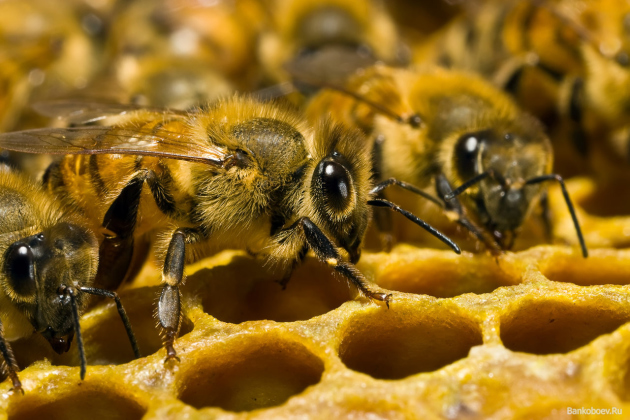
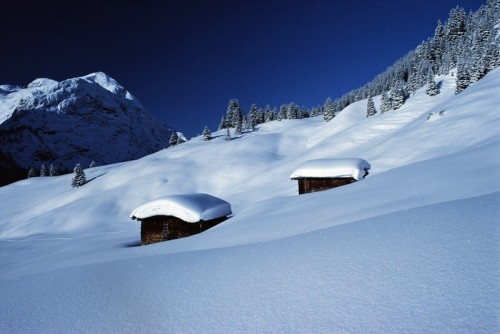

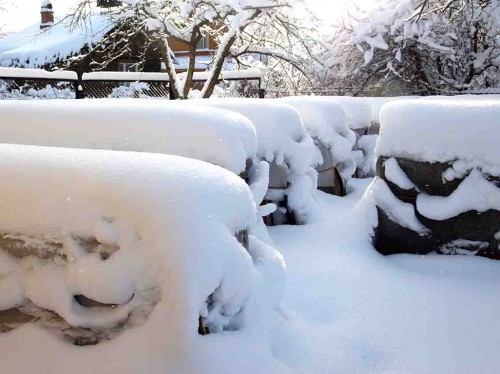
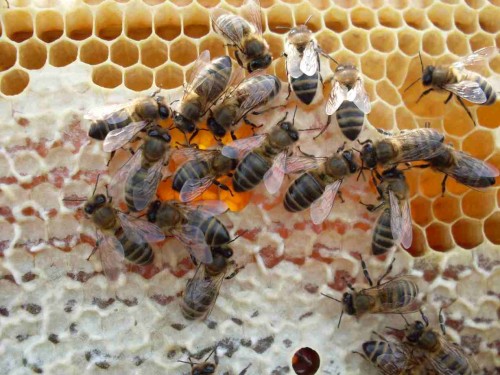
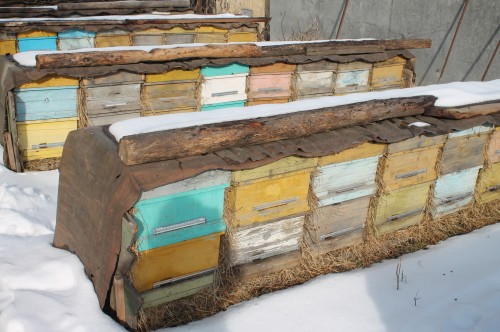
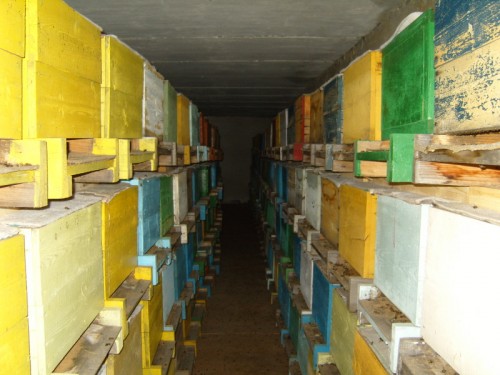
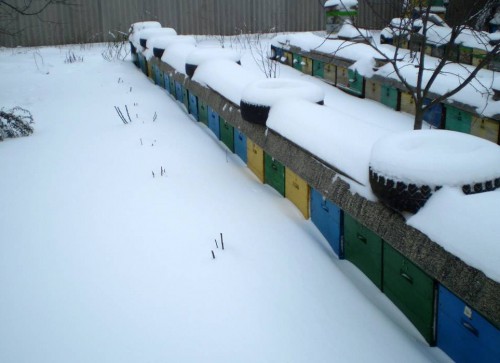
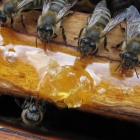
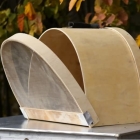
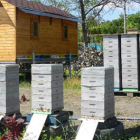
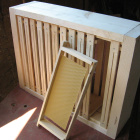
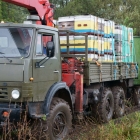
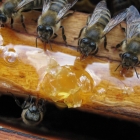
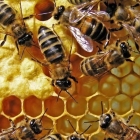
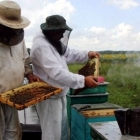
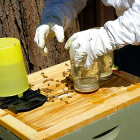
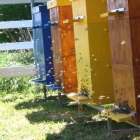
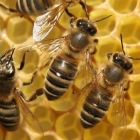
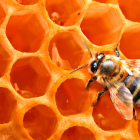
 Start a discussion ...
Start a discussion ...